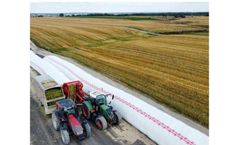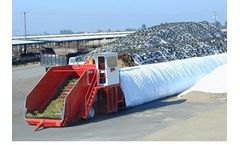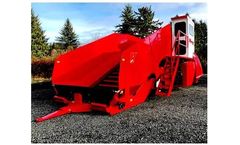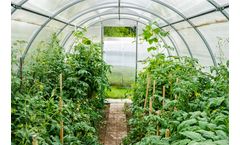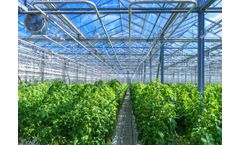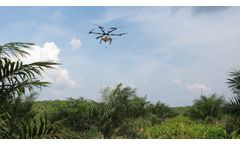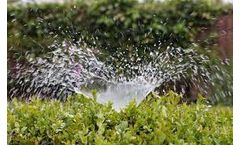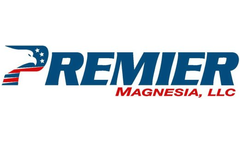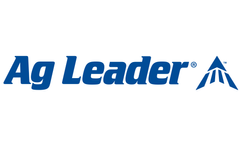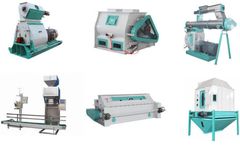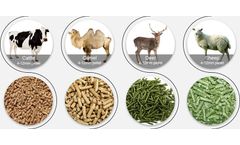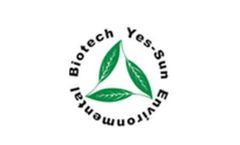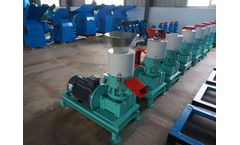Refine by
Alfalfa Articles & Analysis
79 articles found
At Ferme Marygold, a 150-cow operation, both corn and an alfalfa-grass mix have been stored in bags for more than 30 years to ensure reliable, high-quality feed throughout the year. In eastern Canada, where winterkill can completely wipe out alfalfa stands, Dutil mitigates risk by planting a blend of legumes—such as alfalfa or clover—with ...
This is particularly true for silage, a preserved forage made from energy-rich crops such as corn, alfalfa, sorghum, or grass that undergo fermentation under anaerobic conditions. ...
So what’s to know about the differences of silage storage in bags as opposed to piles, bunkers, trenches or dry hay? Plenty! Bagging Silage has been proven to be more cost-effective as well as providing better herd health. Milk production is increased with Dairy Cows and increased weight gain with Beef Cattle. ...
Cattlemen are increasingly turning to bagged silage for flexible feed management. The most fundamental beef cow feeding strategy remains the use of pasture, which is considered the lowest-cost feed resource. Therefore, many cattle operations aim to maximize pasture time annually to benefit from labor, manure management, physical activity, and nutrition advantages. ...
Protein feeds for animals play a vital role in their growth and reproductive functions. As essential nutrients, proteins are comprised of amino acids, which serve as the building blocks for muscle development, tissue repair, enzyme synthesis and hormonal production. Adequate protein intake ensures optimal growth rates, enhances productivity and supports overall health in livestock, horses and ...
Journalism pellets are uniform in dimension, and also the raw materials such as rural plant grains such as soybean dish, wheat bran, hay, lawn, alfalfa grass, corn meal and more can be processed and ideal for different resources. ...
An article reporting their methodology was featured in Plant Science in 2014, describing how the Researchers used temperature gradient greenhouses and growth chamber greenhouses to simulate climate change conditions and study plant responses.4Choosing the Right Growth ChamberCompared to traditional growth chambers, temperature gradient greenhouses and controlled growth chambers offer increased ...
A paper reporting their methodology was published in Plant Science in 2014 and describes how they used growth chamber greenhouses and temperature gradient greenhouses to simulate climate change scenarios and investigate plant responses.4Choosing the Right Growth ChamberGrowth chamber and temperature gradient greenhouses offer increased working area compared with traditional growth chambers, ...
Over the years, this family produces corn, soybeans, wheat, and alfalfa and raises various livestock. They adopt technology and precision agriculture to keep their children in love and enjoy farming and operational survival. ...
Alfalfa grown for forage is a major crop in many areas of the western United States. In the arid and semi–arid west, irrigation is required to obtain economic alfalfa yields. Because alfalfa is a perennial crop with a potentially long growing season, it can use a substantial amount of water. ...
USDA-ARS-WMRL research results with SDI for alfalfa have shown that this method is indeed feasible, conservative, and sustainable. ...
For example, the apparent digestibility of K was lower for cereal silage than for alfalfa silage. Mg excretion in the feces was greater with higher K intake. ...
Based in Gothenburg, Nebraska, Lewis and her husband manage their small cow-calf herd and grow corn, alfalfa, and prairie hay. Since they’ve acquired their farm, Lewis has been excited to prove the benefits precision technology can have on their operation. From her first collegiate precision ag class to her role now, Lewis has been driven by her love ...
In this location I call it the smear. It is usually the leaves from Alfalfa that are pressed on the floor or wall of the TMR mixer. This comes from trying to process dry Alfalfa with improperly maintained equipment. ...
What Raw Materials Can Be Used To Make Feed Pellets 1. Alfalfa meals should be the first one choice for making various feed pellets to meet the high fiber/low carbohydrate needs for poultry – alfalfa is a great ingredient. 2. ...
Attaining of Fodder Materials Raw materials that can use in the manufacturing of pellet feeds are numerous. Some include fish meal, corn, alfalfa, soya beans, additives, meat and bone meal, just to mention but a few. ...
Nitrogen-rich materials include kitchen scraps, fresh pruning’s from your garden, alfalfa hay, grass clippings and seaweed. Keep it moist Water is another key component in making compost, but you don’t need too much. ...
Organic material from leftover food and grass clippings to organic DIY fertilizers made from plant or animal remainsPlant-based fertilizers: Compost Cottonseed meal Soybean Kelp Seaweed Wood ash uses like these Alfalfa meal fertilizer Animal-based fertilizers: Fish emulsion Fish meal Blood meal Animal manure Bat guano Worm castings Bone meal fertilizer ...
Green leaves, grass leaves, etc. are dried and pulverized to become high-quality grass powder or leaf powder, such as alfalfa powder, eucalyptus leaf powder, etc. are good vitamin supplement feeds, generally accounting for 2% to 5% of the diet. ...
EPA has approved the use of sulfoxaflor on alfalfa, corn, cacao, grains (millet, oats), pineapple, sorghum, teff, teosinte, tree plantations, and restored the uses on citrus cotton, cucurbits (squash, cucumbers, watermelons, some gourds), soybeans, and strawberries. ...


